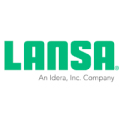Networking was easier 11 years ago, when IBM first introduced the AS/400. The AS/400 was a closed system then, and it was grounded in SNA, not TCP/IP. Clients were hardwired to twinax controllers through thick coaxial cable. Terminals had very little intelligence. We had only a limited number of compatible computers to worry about exchanging data with. It was a limited but stable world.
Things have changed. The new AS/400-centric network is built on a number of different foundations, including the four pillar foundations that we’re covering in this issue’s network integration Focus section: TCP/IP, Microsoft Windows NT, Novell NetWare, and UNIX/Linux.
TCP/IP has been the most significant force in AS/400 networking this decade. Designed to keep our networks working during a nuclear war, TCP/IP has opened the door for e-business. As a side effect, TCP/IP has also opened up the computer world, forcing giants, such as IBM and Microsoft, to standardize and drop their proprietary ways.
But don’t underestimate the power of Microsoft Windows. Many AS/400 shops are maintaining a large base of Windows servers that function as file and print servers, Web servers, database servers, connectivity servers, etc. Even though your main business environment may be an AS/400, chances are very good (approximately 60 out of 100) that you are also running some form of Windows as a primary application or as an office automation environment.
Novell NetWare could easily be termed “the Network Operating System (NOS) that wouldn’t die.” NetWare jumped out to a big lead in the early 1990s only to have been constantly teetering on the verge of extinction without dying. With the strength of NetWare Directory Services (NDS), it hangs in there as a quiet networking partner for groupware, file and print serving, AS/400 gateways, and other tasks. To its credit, Novell keeps on delivering with NetWare, and it’s been a much tougher competitor to eliminate than many people thought possible.
UNIX has been around forever, and Linux’s momentum will make it a fixture in many AS/400 shops. The open source movement and the dedication that Linux users lavish on this solution (which is reminiscent of the devotion Apple users doted on the Macintosh and early Windows proponents doted on Microsoft’s offerings) tell us that Linux will probably play a bigger role in our AS/400 environments in years to come.
These four technologies, along with a possible fifth in Lotus Domino, are the technologies most AS/400 environments struggle with as they create integrated networks. And it is these technologies that we are focusing on this month.
First, Chris Miksanek demonstrates the basics of using the TCP/IP protocol suite to program interprocess communications with your AS/400 in “Not Your Typical TCP/IP Overview.” For the Windows-centric, Shannon O’Donnell discusses how to use the AS/400 Integrated File System to share Windows NT files in an AS/400 environment in his article “QNTC: Opening Windows NT to the AS/400.” Next, Tom Haze and Rod Brusse discuss some unique AS/400-NetWare integration features in “AS/400 and NetWare: Here Today, Enhanced Tomorrow.” Finally, for AS/400-Linux integration, read Barry Kline’s informative article “Fitting Linux into an AS/400 World,” where he discusses how to use TCP/IP, AS/400 NetServer, Java-based terminal emulation products, and open-source databases to make Linux hum in an AS/400 world.
Your AS/400 networking challenges are big, and you need a lot of information to integrate your networks. With this issue’s Focus section, you learn a lot of new techniques that you can put to work today.











 IT managers hoping to find new IBM i talent are discovering that the pool of experienced RPG programmers and operators or administrators with intimate knowledge of the operating system and the applications that run on it is small. This begs the question: How will you manage the platform that supports such a big part of your business? This guide offers strategies and software suggestions to help you plan IT staffing and resources and smooth the transition after your AS/400 talent retires. Read on to learn:
IT managers hoping to find new IBM i talent are discovering that the pool of experienced RPG programmers and operators or administrators with intimate knowledge of the operating system and the applications that run on it is small. This begs the question: How will you manage the platform that supports such a big part of your business? This guide offers strategies and software suggestions to help you plan IT staffing and resources and smooth the transition after your AS/400 talent retires. Read on to learn: Business users want new applications now. Market and regulatory pressures require faster application updates and delivery into production. Your IBM i developers may be approaching retirement, and you see no sure way to fill their positions with experienced developers. In addition, you may be caught between maintaining your existing applications and the uncertainty of moving to something new.
Business users want new applications now. Market and regulatory pressures require faster application updates and delivery into production. Your IBM i developers may be approaching retirement, and you see no sure way to fill their positions with experienced developers. In addition, you may be caught between maintaining your existing applications and the uncertainty of moving to something new.
LATEST COMMENTS
MC Press Online